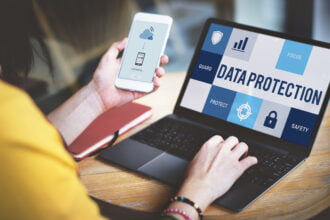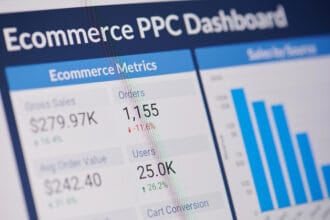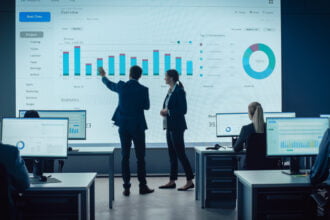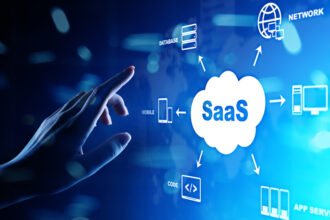There are many reasons big data has become a double-edged sword for businesses. One of the biggest examples is with employee monitoring.
- Employers Must Find Ethical Ways to Use Data Analytics to Monitor their Workers
- The Biggest Concerns Employees Have About Workplace Surveillance in a World Governed by Big data
- Employee Monitoring Do’s and Don’ts
- The Do’s of Employee Monitoring
- Be Transparent
- Create an Employee Monitoring Software Policy
- Communicate Before, During, and After Implementing an Employee Monitoring Software
- Use Data for its Intended Purposes Only
- Protect Employee Data
- Assure Employees You’re Observing State Laws
- The Don’ts of Employee Monitoring
Many companies are using data analytics to monitor their employee productivity and other behavior. It can be even more beneficial than using big data for recruiting. This is an area where big data can help immensely. However, it also raises some concerns. Employees are more concerned than ever about their data privacy. Regulators also require employers to be cautious about how data is stored and used.
Employers Must Find Ethical Ways to Use Data Analytics to Monitor their Workers
Since 2020, companies have been struggling to find alternative methods to supervise their workers, given that 97 percent of employees would prefer to work remotely. That explains why the demand for employee monitoring software has been on the rise steadily since the pandemic. Data analytics technology has made this a lot easier.
According to a recent survey by Instant Offices, 78 percent of companies use employee monitoring software to track work performance and online activity. This heightened surveillance, while it makes sense due to the lack of physical supervision, still raises ethical concerns.
Knowing the do’s and don’ts of using data analytics for employee monitoring will help you create a fair, transparent, and non-invasive employee monitoring strategy.
The Biggest Concerns Employees Have About Workplace Surveillance in a World Governed by Big data
Employers find employee monitoring beneficial since it provides the logical solution to overcoming the challenges of remote work while ensuring sustained productivity. Big data has made this easier than ever. With the right data analytics tools, employers can:
- oversee employees’ work from anywhere
- track project progress
- assess performance
- protect themselves against lawsuits and insider threats
- prevent inappropriate workplace behavior
- protect their companies against security breaches
However, employees have different perceptions of employee monitoring with big data. Your intention for collecting employee data should be to create a company culture that enables workers to perform their best. It’s not to spy on them.
But that may not be how your remote workers are seeing it. Some of the biggest concerns of employee monitoring are:
Trust Issues
The first question that employees will raise when you introduce workplace surveillance is whether you trust them. They will most likely think that you’re implementing the tools to spy on them.
This can lead to feelings of anger and dissatisfaction, which will turn to disengagement.
Privacy Concerns
Monitoring your employees’ activities raises privacy concerns. People use computers for personal use and would prefer to keep their personal stuff private. They won’t like the idea that everything they do is being tracked.
Breach of Personal Data
Workplace monitoring involves collecting data about your employee’s computer usage. Once collected, they have limited control over its usage or security. They won’t know who will have access to their data or how the data will be used.
This raises concerns among employees if their data may be misused or used to punish them.
Employee Monitoring Do’s and Don’ts
With the points above in mind, you should consider privacy, trust, and ethical issues when creating your employee monitoring strategies. Otherwise, your remote workers’ morale and productivity will suffer.
So, what’s considered ethical and unethical in workplace surveillance?
The Do’s of Employee Monitoring
Be Transparent
The number one rule within the monitoring space is transparency. Employees should be aware that you’re monitoring them, so they don’t mistake it for spying. Make it absolutely clear that you don’t intend to surveil their personal activities, you just need to collect data to help boost workplace productivity.
But don’t stop there. The key is to make sure your employees are as comfortable as possible with employee monitoring. For example, you can send them feedback with data showing how much time they are spending on personal social media or other non-work-related stuff.
A survey by the American Management Association revealed that 84 percent of employers notify their employees that they review computer activity. Greater transparency will have the following benefits for your organization:
- Increased buy-in for employee monitoring software. A DTEX and Harris poll shows that 77 percent of employees won’t have a problem being monitored as long as their employers are transparent about it.
- It builds trust. Being transparent about workplace monitoring reduces the negative impact associated with the practice. While it won’t clear all doubt in employees’ minds, they will be more understanding if you’re open about it.
- Encourages self-management. Allowing your workers to access and use the collected data can help improve autonomy and empower them to self-manage their workflow.
Create an Employee Monitoring Software Policy
An employee monitoring policy will help you define your intentions more clearly. Some of the things you should address in the policy include:
- Reasons for monitoring your employees
- What you’ll be monitoring: internet use, social media, emails, calls, employees’ work screens.
- Outline the type of monitoring you’ll implement: location (GPS) tracking, keylogging, audio, time tracking, screen and video capture, etc.
- How many hours will you monitor? Will it be only during work hours?
Clarifying all these lets them know what to expect and helps dispel trust issues.
Communicate Before, During, and After Implementing an Employee Monitoring Software
In the spirit of being transparent, you should make sure your remote workers understand why you want to monitor them. Of course, remote workers should expect some form of surveillance due to the lack of physical supervision.
That said, communication is the key to the successful implementation of your monitoring strategies. Before introducing the tool, make sure they understand the reasons for monitoring, which include:
- Using time tracking and monitoring apps provides accurate time logs that will help facilitate accurate payments. This reduces both time and money waste for both the employer and employee.
- The tools bring issues with overworking to light, enabling you to distribute work equally and prevent burnout.
- The apps will expose cases of workplace malpractices or abuse, allowing them to be resolved internally.
Clearly lay out how monitoring will be in the best interests of everyone concerned. Once implemented, follow up to get feedback, insights, and queries about the process. What can be improved? Is the tool aligned with company policies?
Making sure that everyone is satisfied with the program will promote trust and buy-in.
Use Data for its Intended Purposes Only
Keep in mind, ethical employee monitoring isn’t just about how you collect employee data – it’s about how you intend to use it. The data should strictly be for the specific purpose of improving productivity.
Sharing your intentions openly with your employees about how their data will be used to help them goes a long way in winning them over. According to an Accenture survey, 89 percent of employees are open to data collection on them and their work if it will improve their performance and wellbeing.
Protect Employee Data
Your workers may not be comfortable about who will have access to their data. They may also be concerned about the possibility of blackmail and data leaks.
You must assure them that you’ve taken measures to safeguard the data from misuse. But, how can you keep the employee monitoring data safe? Here are some tips:
- Limit access to employee data only to key stakeholders in your company. The stakeholders must understand the privacy expectations of the employees and be well versed with the company’s policies regarding employee data.
- Treat all recorded data as sensitive. Apply the necessary administrative and technical security measures to protect employee monitoring data. Apart from limiting access to authorized personnel only, make it mandatory to acquire authorization to access the databases. You should also remove from the database any data that’s no longer relevant.
Assure Employees You’re Observing State Laws
Be sure to keep in mind the labor and privacy laws that protect employee privacy when drafting your employee monitoring policy. Each state and country have different laws about what employers can and cannot monitor.
Remember, what you’re monitoring affects how you can do so legally. For example, the Electronic Communications Privacy Act (ECPA) protects against intercepting in-transit digital electronic communications. However, it provides exceptions for businesses.
Likewise, the General Data Protection Regulation (GDPR) act in the European Union requires employers to get the employees’ consent before monitoring them.
Make sure your employee monitoring strategies align with the existing monitoring laws of the countries your employees belong to. More importantly, let them know that you’re sticking to these laws. This will help minimize ethical issues in the workplace.
Just to be safe, consult with your lawyer about these laws and regulations before implementing the system.
The Don’ts of Employee Monitoring
Don’t Spy on Workers
Don’t track your employees just for the sake of it. The employee data you collect should be used to streamline and improve your work processes over time. The tools are meant to provide proof of work, which can help prevent inaccurate payroll processing, among other things.
When you use the data for the sole reason of spying, then it becomes unethical for employee monitoring. You’ll risk losing employees or even possible legal actions against your unethical practices.
Don’t Collect Data Outside of Work Hours
The remote work environment has raised the issue of after-hours monitoring. Often, employees will use the company devices for personal matters after their shifts have ended. If you record their activity during these hours, chances are you’ll capture sensitive personal details that could have serious implications.
The best approach is to forbid the use of company-owned devices outside work hours for personal use. Alternatively, remind employees to turn their trackers off while on break or after their shifts.
Your personnel will have peace of mind knowing that what they do during their free time stays private.
Don’t Secretly Monitor Your Workers
Depending on the laws governing workplace monitoring where you’re located, you may not be obligated to disclose that you’re monitoring your workers. In other states, employee consent is required. We recommend letting them know either way.
If you don’t, and they find out they are being monitored without their consent (even if the law allows it), it can lead to stress, anger, and anxiety. All of which will reflect negatively on their performance and productivity.
When you keep them in the loop, they will consider you an honest and open employer. This will help cultivate a culture of trust and honesty. Moreover, your workers will feel valued for seeking their permission to track them.
Don’t Collect Personal Data
Most employee monitoring tools come with the screenshot feature, while others allow you to record the screen and keystrokes on your staff’s computers. For the most part, the screenshot function serves as proof of work to prevent micromanaging.
However, the screenshots will also capture confidential data like bank accounts, passwords, and personal social media activities. These are personal data that you aren’t supposed to collect.
To avoid this, invest in software that respects employee privacy. For example, a free clock in and out app that intentionally blurs screenshots ensures that employers still track what the employee is doing without seeing the contents.
Additionally, the software should give employees control over activity monitoring. That is, they should be able to delete screenshots they don’t want to be seen or stop activity tracking altogether. Employees will appreciate the autonomy to dictate when they want to be monitored.
Don’t Monitor More than You Should
Invasive monitoring can be demoralizing and illegal. Doing it excessively infringes on the proportionality principle of certain data privacy frameworks, including GDPR. For example, monitoring website and app usage should provide enough data to enforce internet use policy.
It becomes invasive when you use keyloggers. Try to find less invasive ways to collect employee data to meet your business goals.
Don’t Monitor Selectively
Employee monitoring shouldn’t apply only to remote workers. No matter where your employees work, they should all benefit from the productivity and performance insights gathered from activity monitoring.
Tracking one group and not another is a recipe for conflicts, unhealthy workplace relationships, and a lack of cohesiveness. It may also lead to issues with employee morale and workplace fairness.
Final Word on Ethical Employee Monitoring with Data Analytics
Regardless of the type of employee monitoring you use, it’s best to lean on the side of transparency and balance. Focus on creating employee monitoring strategies that are less invasive, and most importantly, respectful of employee privacy.
When you’re open about employee data usage, data collection won’t be a source of concern for your remote workforce. You can then gather insightful data that you can use to maximize workflow, task delegation, and employee productivity.











